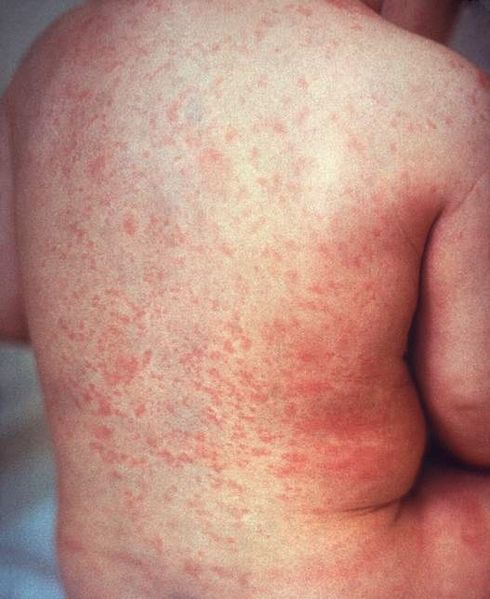Playlist
Show Playlist
Hide Playlist
Other General Dermatologic Terminologies
-
Slides General Dermatologic Terminologies.pdf
-
Reference List Pathology.pdf
-
Download Lecture Overview
00:00 Dermatopathology -- Other general dermatologic terminology. 00:06 Plaque. A plaque is an elevated, solid, superficial lesion greater than one centimeter in diameter. 00:16 Examples include psoriasis, Bowen’s disease, mycosis fungiodes, eczema, and tinea corporis. 00:26 Patch. A patch is a flat skin discoloration. 00:32 A large macule is when it’s greater than one centimeter in diameter. 00:38 Examples are the nevus flammeus here on the left, and vitiligo on the right. 00:45 Wheel. A wheel is a plaque that is evanescent, quickly fading, and pruritic or itchy. 00:53 Examples are urticaria and dermatographia. 00:58 Vesicle. A vesicle is a papule that contains clear fluid or a blister. 01:06 Examples include herpes zoster on the left and herpes simplex on the right. 01:13 Bulla. A bulla is a large vesicle with localized fluid collection that is greater than half a centimeter in diameter. 01:23 Examples include bullous pemphigoid here on the left, bullous impetigo and pemphigus vulgaris. 01:31 Pustule. A pustule is a papule that contains purulent material. 01:38 Examples include acne and pustular psoriasis, also impetigo and follicullitis. 01:47 Cyst. A cyst is a nodule with fluid or semi solid material. 01:54 Examples include a epidermoid cyst on the left and cystic acne on the right.
About the Lecture
The lecture Other General Dermatologic Terminologies by Mohammad Hajighasemi-Ossareh, MD is from the course Inflammatory Skin Diseases.
Included Quiz Questions
Which of the following terms describes a skin lesion that is flat, discolored, and not larger than 1 cm in diameter?
- Macule
- Papule
- Patch
- Bulla
- Plaque
Customer reviews
5,0 of 5 stars
| 5 Stars |
|
5 |
| 4 Stars |
|
0 |
| 3 Stars |
|
0 |
| 2 Stars |
|
0 |
| 1 Star |
|
0 |




